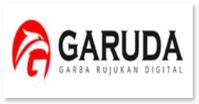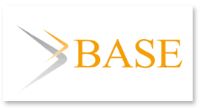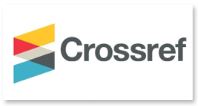A PROTOTYPE MODEL ON DEVELOPMENT OF WEB-BASED DECISION SUPPORT SYSTEM FOR EMPLOYEE PERFORMANCE ASSESSMENTS WITH SIMPLE ADDITIVE WEIGHTING METHOD
DOI:
https://doi.org/10.30656/jsii.v10i1.6137Abstract
The manager or related supervisor performs employee performance assessments to measure the performance and competency of the company's employees. The results of employee assessments can be used to make decisions. Three problems arise in the performance assessment process for PT Tibeta Logistik Indonesia's current employees. The first is that the assessment process is carried out conventionally. So it takes longer, the assessment results can be more objective, and managers or superiors cannot monitor employee performance evaluation results. Based on the literature review, it is known that the Decision Support System is a method that performs assessments more quickly and objectively. Simple Additive Weighting (SAW) is the Decision Support System method for performance assessment. The decision support system will be implemented on a website-based system designed with a prototype model. This research produces a website-based decision support system that can contribute to companies in evaluating employee performance. Before implementation, the decision support system was tested using the User Acceptance Test (UAT) method and obtained very good average results. Then in the comparison between before and after using the system, the results of employee assessments when using the system get superior results in 3 aspects: Integration, security, and ranking.
Kata kunci: DSS, Prototipe, SAW, UAT, website.
References
H. Putra, “Evaluasi Dan Pemetaan Regulasi Terkait Digitalisasi Logistik Dalam Menghadapi Industri 4.0,†J. Transp. Multimoda, vol. 17, no. 1, pp. 36–44, 2019, doi: 10.25104/mtm.v17i1.1254.
J.-J. H. Gwo-Hshiung Tzeng, Multiple Attribute Decision Making, 1st ed. New York: Chapman and Hall/CRC, 2011. doi: https://doi.org/10.1201/b11032.
Yuda Irawan, “Decision Support System For Employee Bonus Determination With Web-Based Simple Additive Weighting (SAW) Method In PT. Mayatama Solusindo,†J. Appl. Eng. Technol. Sci., vol. 2, no. 1, pp. 7–13, 2020, doi: 10.37385/jaets.v2i1.162.
F. Haswan, “Application of Simple Additive Weighting Method to Determine Outstanding School Principals,†SinkrOn, vol. 3, no. 2, p. 186, 2019, doi: 10.33395/sinkron.v3i2.10082.
V. Sihombing, V. M. M. Siregar, W. S. Tampubolon, M. Jannah, Risdalina, and A. Hakim, “Implementation of simple additive weighting algorithm in decision support system,†IOP Conf. Ser. Mater. Sci. Eng., vol. 1088, no. 1, p. 012014, 2021, doi: 10.1088/1757-899x/1088/1/012014.
L. Äkräs, M. Vahvaselkä, F. Silvenius, J. Seppälä, and H. Ilvesniemi, “A multi-criteria decision-making framework and analysis of vegetable oils to produce bio-based plastics,†Ind. Crops Prod., vol. 188, no. September, 2022, doi: 10.1016/j.indcrop.2022.115584.
T. J. Wibowo et al., “Sistem Informasi Penunjang Proses Pemesanan dan Desain Kue Pada Toko Kue Artisan Online Berbasis Web,†vol. X, no. 1, pp. 48–54, 2019.
H. Widjaja and R. I. Desanti, “Decision Support System for Home Selection in South Tangerang City Using TOPSIS Method,†IJNMT (International J. New Media Technol., vol. 7, no. 2, pp. 76–81, 2020, doi: 10.31937/ijnmt.v7i2.1300.
Y. J. Wang, “Interval-valued fuzzy multi-criteria decision-making based on simple additive weighting and relative preference relation,†Inf. Sci. (Ny)., vol. 503, pp. 319–335, 2019, doi: 10.1016/j.ins.2019.07.012.
E. Boltürk, A. Karaşan, and C. Kahraman, “Simple additive weighting and weighted product methods using neutrosophic sets,†Stud. Fuzziness Soft Comput., vol. 369, pp. 647–676, 2019, doi: 10.1007/978-3-030-00045-5_25.
T. Saravanan, S. Jha, G. Sabharwal, and S. Narayan, “Comparative Analysis of Software Life Cycle Models,†Proc. - IEEE 2020 2nd Int. Conf. Adv. Comput. Commun. Control Networking, ICACCCN 2020, pp. 906–909, 2020, doi: 10.1109/ICACCCN51052.2020.9362931.
W. W. Widiyanto, “Analisa Metodologi Pengembangan Sistem Dengan Perbandingan Model Perangkat Lunak Sistem Informasi Kepegawaian Menggunakan Waterfall Development Model, Model Prototype, Dan Model Rapid Application Development (Rad),†J. Inf. Politek. Indonusa Surakarta ISSN, vol. 4, no. 1, pp. 34–40, 2018, [Online]. Available: http://www.informa.poltekindonusa.ac.id/index.php/informa/article/view/34
H. J. R. Gary B. Shelly, Systems Analysis and Design, 9th ed. New York: Cengange, 2011. [Online]. Available: https://books.google.co.id/books/about/Systems_Analysis_and_Design.html?id=XiJTWMRPZi4C&redir_esc=y
S. Wu, “Design of interactive digital media course teaching information query system,†Inf. Syst. E-bus. Manag., vol. 18, no. 4, pp. 793–807, 2020, doi: 10.1007/s10257-018-00397-1.
Z. Elma, “Implementasi Metode Usability Testing Dengan System Usability Scale Dalam Evaluasi Website Layanan Penyedia Subtitle (Studi Kasus: Subscene),†Ultim. InfoSys J. Ilmu Sist. Inf., vol. 10, no. 2, pp. 104–110, 2020, doi: 10.31937/si.v10i2.1197.
A. K. Sahu, N. K. Sahu, A. K. Sahu, M. S. Rajput, and H. K. Narang, “T-SAW methodology for parametric evaluation of surface integrity aspects in AlMg3 (AA5754) alloy: Comparison with T-TOPSIS methodology,†Meas. J. Int. Meas. Confed., vol. 132, pp. 309–323, 2019, doi: 10.1016/j.measurement.2018.09.037.
F. Sembiring, M. T. Fauzi, S. Khalifah, A. K. Khotimah, and Y. Rubiati, “Sistem Pendukung Keputusan Penerima Bantuan Covid 19 menggunakan Metode Simple Additive Weighting (SAW) (Studi Kasus : Desa Sundawenang),†Explor. Sist. Inf. dan Telemat., vol. 11, no. 2, p. 97, 2020, doi: 10.36448/jsit.v11i2.1563.
T. Singh, P. Pattnaik, S. R. Kumar, G. Fekete, G. Dogossy, and L. Lendvai, “Optimization on physicomechanical and wear properties of wood waste filled poly(lactic acid) biocomposites using integrated entropy-simple additive weighting approach,†South African J. Chem. Eng., vol. 41, no. May, pp. 193–202, 2022, doi: 10.1016/j.sajce.2022.06.008.
K. Piasecki and E. Roszkowska, “SS symmetry Simple Additive Weighting Method Equipped with,†2019
Downloads
Published
Issue
Section
License
- This work is licensed under a Creative Commons Attribution-ShareAlike 4.0 International License.
-
Author(s)' Warranties
The author warrants that the article is original, written by stated author(s), has not been published before, contains no unlawful statements, does not infringe the rights of others, is subject to copyright that is vested exclusively in the author and free of any third party rights, and that any necessary written permissions to quote from other sources have been obtained by the author(s).
- Information
- Notice about change in the copyright policy of the journal 'Jurnal Sistem Informasi (JSiI)' : "From Vol 1, onwards the copyright of the article published in the journal 'Jurnal Sistem Informasi' will be retained by the author"

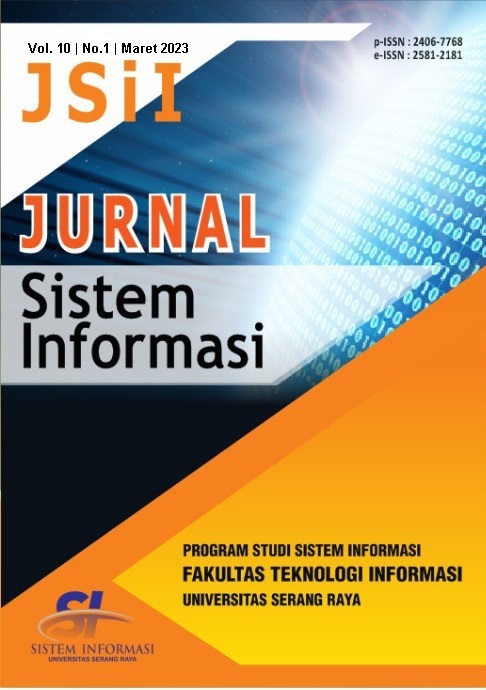





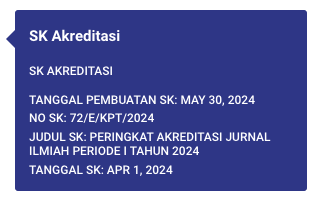





.jpg)




